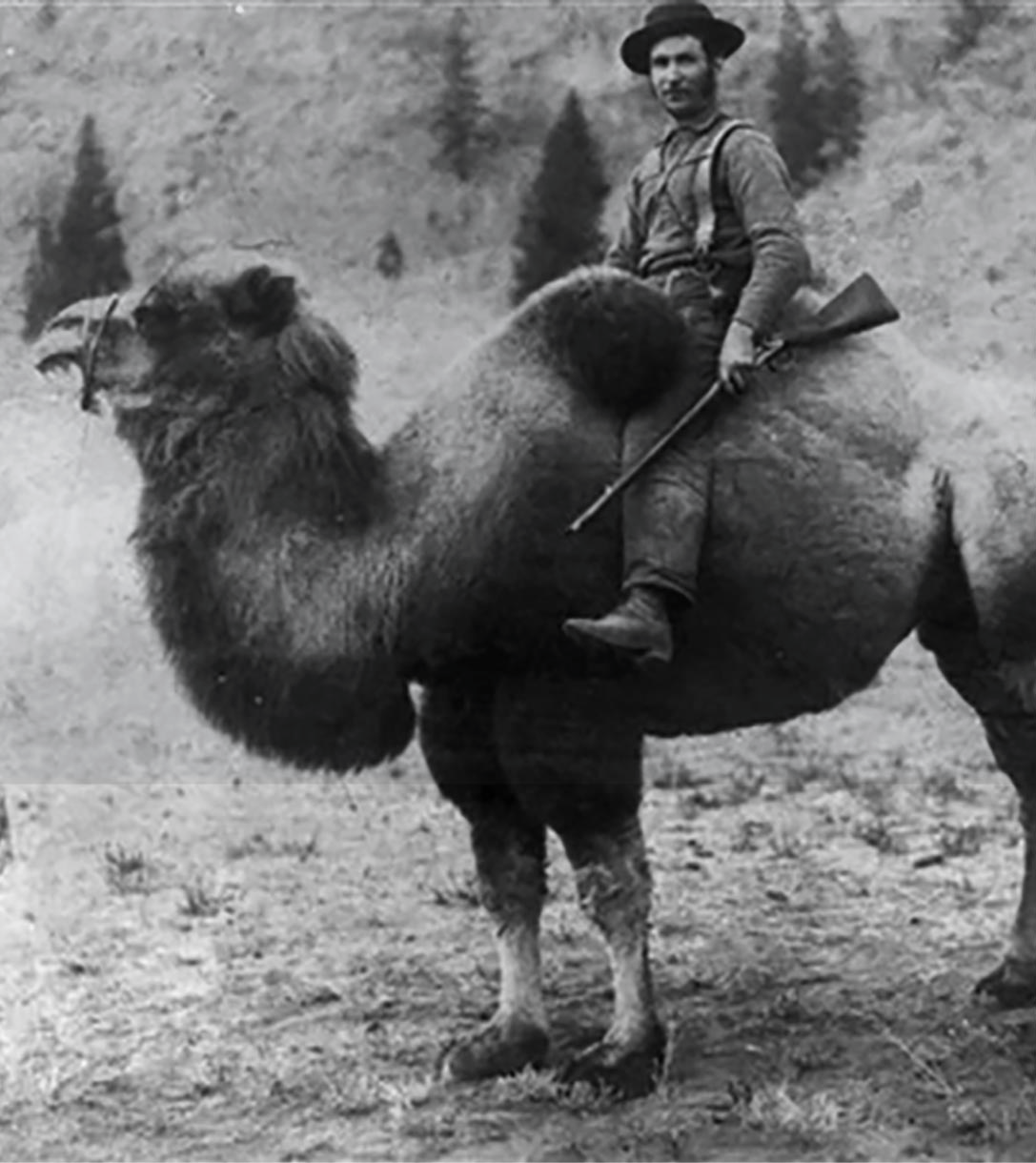Camels in the Cariboo
Frank Calbreath, along with Frank Laumeister, was also known as the consignee for those famous camels that made only one trip to the Cariboo and back. In 1862 miners stared in awe as camels were brought in as a means of transport for supplies to the Cariboo from Yale. It was envisioned that these muscular animals would be perfect for carrying heavy amounts of freight long distances without needing regular water. READ MORE >The idea was sparked from neighbours in the US having success using camels as pack animals, but the Cariboo Camels had a different result. The experiment was unsuccessful as the camels spooked the horses and their soft hoof pads were unsuited to the rocky trails, even with the addition of canvas booties. They were also found to be quite destructive with their diet including miner’s pants, shirts, and even bars of soap. Sadly, after the unsuccessful experiment, many of the camels were left to their own defenses with others taken in at nearby ranches. The last notable surviving Cariboo Camel was called “Lady” and lived at a ranch in Grand Prairie, BC (currently Westwold, BC) until around 1896-1905. Lady, shown with WH Smith, is the subject of the photograph below which is the only known photograph of the camels.
View the story,
Camels in the Cariboo,
written and illustrated by students from Clinton Elementary School.

Photo Credits: Clinton Museum Gallery


 Community
Community Council
Council Reports &
Reports &
